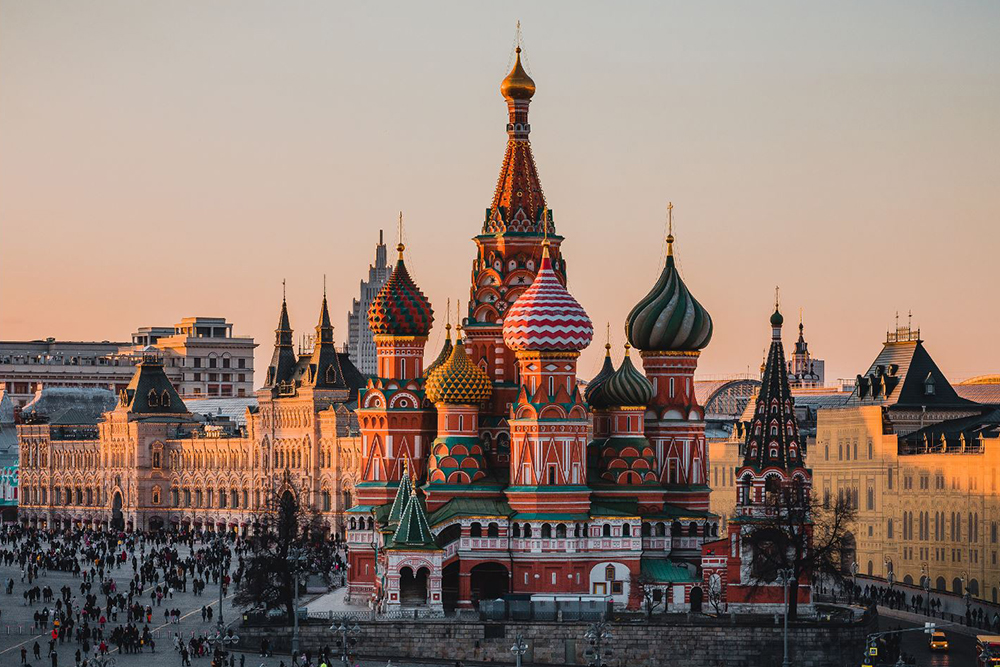Russian Car Brands: A Comprehensive Guide to the Automotive Industry of Russia
Russian Car Brands: A Comprehensive Guide to the Automotive Industry of Russia cars.truckstrend.com
Introduction
The automotive landscape of Russia, often overshadowed by its Western and Asian counterparts, possesses a unique character shaped by decades of distinct engineering philosophies, economic realities, and geopolitical shifts. Russian car brands are more than just vehicles; they are a testament to national resilience, an embodiment of practical utility, and a reflection of a vast country’s diverse needs. From the rugged simplicity designed to conquer challenging terrains to the burgeoning luxury segment aiming for global recognition, understanding Russian car brands offers a fascinating glimpse into a self-reliant and evolving industry. This article delves into the rich history, key players, current trends, and future prospects of Russian automotive manufacturing, providing a comprehensive guide for enthusiasts, potential buyers, and curious minds alike.
Russian Car Brands: A Comprehensive Guide to the Automotive Industry of Russia
A Rich Heritage: The Evolution of Russian Automotive Industry
The roots of Russian automotive manufacturing stretch back to the early 20th century, but it was during the Soviet era that the industry truly began to define itself. Centralized planning prioritized mass production, utility, and durability over aesthetic flair or advanced technology, focusing on meeting the needs of a vast and often challenging country.
Early giants like GAZ (Gorkovsky Avtomobilny Zavod), established in 1932 with assistance from Ford, quickly became a cornerstone, producing everything from trucks and buses to the iconic "Volga" sedans. ZiL (Zavod imeni Likhachova), another prominent name, specialized in luxury limousines for government officials and heavy-duty trucks. Moskvich, founded in 1930, focused on more compact and affordable passenger cars for the masses.
However, the most globally recognized name emerged in 1966 with the establishment of AvtoVAZ, which produced the legendary Lada brand. Built initially with Fiat’s technical assistance, Lada cars like the "Zhiguli" (VAZ-2101) and the iconic Niva (VAZ-2121) became synonymous with rugged reliability, affordability, and repairability, making them staples not just in the Soviet Union but also in parts of Eastern Europe and even Western markets.
The collapse of the Soviet Union in 1991 ushered in a turbulent period. The industry faced intense competition from imported foreign cars, outdated production methods, and economic instability. Many plants struggled, and some, like Moskvich, eventually ceased production. Yet, this challenging era also spurred modernization efforts and a gradual shift towards market-oriented strategies. In recent decades, foreign manufacturers established joint ventures and production facilities in Russia, bringing new technologies and designs. However, geopolitical events, particularly since 2022, have drastically reshaped the landscape, leading to the withdrawal of many foreign players and a renewed push for domestic production and import substitution, breathing new life into local brands and even prompting the revival of old names like Moskvich.
The Pillars of Russian Motoring: Key Brands Unveiled
The Russian automotive industry is dominated by a few key players, each with its distinct niche and legacy.
Lada (AvtoVAZ): The Undisputed King of the Road

Lada, produced by AvtoVAZ, remains the most iconic and dominant Russian car brand. For decades, Lada has been the vehicle of choice for millions of Russians, known for its affordability, robust construction, and ability to withstand harsh climate and road conditions.
- Iconic Models: The Lada Niva (now Lada Niva Legend and Lada Niva Travel) is an off-road legend, celebrated worldwide for its simple, rugged 4×4 capability. The "Zhiguli" series (VAZ-2101 to VAZ-2107) was the workhorse of the Soviet era.
- Current Lineup: Modern Lada vehicles include the Granta (Russia’s best-selling car for many years, known for its low cost and practicality), the Vesta (a more modern sedan and station wagon offering improved comfort and features), and the Largus (a versatile station wagon/van based on a Renault platform).
- Modernization & Challenges: In the 2010s, AvtoVAZ benefited significantly from its alliance with Renault-Nissan, which brought modern platforms, engines, and design expertise. However, following the withdrawal of Renault in 2022, Lada has focused on localizing component production and adapting existing models, often with simplified features due to supply chain constraints. Despite these challenges, Lada remains the cornerstone of the Russian car market, embodying practicality and national pride.

GAZ (Gorky Automobile Plant): The Backbone of Commerce
While Lada focuses on passenger cars, GAZ has long been the powerhouse of Russia’s commercial vehicle sector. Though historically known for the "Volga" passenger cars, GAZ’s contemporary strength lies in its diverse range of light commercial vehicles, trucks, and buses.
- Flagship Product: The GAZelle series of light commercial vehicles (vans, minibuses, chassis cabs) is ubiquitous across Russia and CIS countries. Known for their durability, versatility, and ease of repair, GAZelles are the workhorses for small businesses, public transport, and logistics. The newer GAZelle Next series offers improved comfort, safety, and modern engines.
- Other Products: GAZ also produces medium-duty trucks (like the Valdai and Sadko series) and buses, playing a critical role in the country’s infrastructure and economy. Their vehicles are built to handle heavy loads and operate reliably in challenging environments.
UAZ (Ulyanovsk Automobile Plant): The Off-Road Specialist
For those venturing off the beaten path, UAZ is the brand of choice. With a heritage deeply rooted in military vehicle production, UAZ specializes in highly capable and incredibly rugged off-road vehicles.
- Key Models: The UAZ Patriot is a full-size SUV offering impressive ground clearance and 4×4 capabilities, popular among rural residents, hunters, and adventurers. The UAZ Hunter is a direct descendant of the iconic UAZ-469 military jeep, known for its extreme simplicity and virtually indestructible nature. The UAZ Bukhanka (literally "loaf of bread") is a unique, highly versatile van/minibus with exceptional off-road prowess, remaining in production since the 1960s with minimal changes, a testament to its functional design.
- Design Philosophy: UAZ vehicles prioritize functionality, off-road performance, and ease of maintenance above all else. They are built to be robust, repairable with basic tools, and reliable in the harshest conditions.
Aurus: The New Face of Russian Luxury
Aurus is Russia’s ambitious foray into the ultra-luxury segment, a brand designed to showcase the nation’s engineering capabilities and provide high-end vehicles for state officials and discerning private buyers.
- Flagship Model: The Aurus Senat limousine gained international attention as the official state car for the President of Russia. It is a large, opulent vehicle featuring a hybrid powertrain developed with Porsche Engineering.
- Expansion: The Aurus lineup also includes the Komendant SUV and a planned Arsenal minivan. These vehicles aim to combine cutting-edge technology with bespoke luxury, offering a distinct Russian interpretation of high-end motoring. Aurus represents a significant shift from the industry’s traditional focus on mass-market utility.
Moskvich: The Phoenix Rises
The Moskvich brand, once a staple of Soviet motoring, ceased production in the early 2000s. However, in a significant development post-2022, the brand was revived with state support, taking over a former Renault plant in Moscow.
- Revival Strategy: The new Moskvich cars are largely based on rebadged Chinese models (primarily from JAC Motors) with assembly and increasing localization in Russia. This strategy aims to rapidly fill the void left by departing foreign automakers and establish a modern, domestically produced lineup.
- Current Models: The Moskvich 3 is an urban compact SUV, and the Moskvich 3e is its electric variant, marking the brand’s entry into the EV segment. The brand plans to expand its model range to include sedans and larger SUVs. Its revival symbolizes Russia’s drive for automotive self-sufficiency.
Engineering Philosophy and Design Characteristics
Russian car brands have traditionally adhered to a distinct engineering philosophy, driven by the unique demands of the country.
- Durability and Ruggedness: This is paramount. Vehicles must withstand extreme temperatures (from -40°C to +40°C), unpaved roads, and general harsh operating conditions. This translates to robust suspension systems, high ground clearance, and strong chassis.
- Simplicity and Repairability: Historically, complex electronics were avoided in favor of mechanical reliability. Cars were designed to be easily serviced and repaired, often by owners themselves, using readily available parts. While modern models incorporate more technology, the core principle of practicality remains.
- Affordability: For brands like Lada, keeping costs low has always been a key competitive advantage, making vehicles accessible to a wide demographic.
- Functionality Over Form: While modern Russian cars are improving aesthetically, the primary focus has often been on utility and performance rather than cutting-edge design or luxurious interiors, especially for the mass market and commercial vehicles.
Navigating the Modern Landscape: Challenges and Opportunities
The Russian automotive industry faces a complex array of challenges and, surprisingly, new opportunities in the current global environment.
Challenges:
- Sanctions and Supply Chain Disruptions: The withdrawal of many foreign manufacturers and sanctions have severely impacted access to critical components (e.g., airbags, ABS systems, advanced electronics) and technologies. This has led to "simplified" versions of cars and a scramble for new suppliers.
- Technology Gap: Historically, Russian brands lagged behind global leaders in terms of engine efficiency, safety features, and infotainment systems. While partnerships helped bridge this gap, the current situation demands accelerated domestic R&D.
- Competition: Despite foreign withdrawals, the market is increasingly seeing an influx of Chinese brands, which offer modern designs and technologies at competitive prices, posing new competition for domestic producers.
- Limited Export Markets: Most Russian car brands have limited presence in international markets beyond the CIS region, hindering economies of scale and global brand recognition.
Opportunities:
- Import Substitution: The current environment has created a powerful impetus for domestic production and localization of components, fostering the growth of the local supply chain.
- Renewed Focus on Domestic Brands: With fewer foreign options, Russian consumers are turning back to Lada, UAZ, and the revived Moskvich, boosting sales and investment in these brands.
- New Partnerships: The industry is forging new collaborations, particularly with Chinese manufacturers, to access platforms, technologies, and components.
- Electric Vehicle Development: There’s a growing push to develop domestic EV platforms and production, with brands like Moskvich and Evolute (another new brand assembling Chinese EVs) leading the charge. This offers a chance to leapfrog traditional ICE technology.
- Government Support: The Russian government is actively supporting the domestic automotive industry through subsidies, preferential loans, and protective measures.
Practical Advice for Enthusiasts and Buyers
For those considering Russian car brands, whether domestically or with international interest, here’s some practical advice:
- For Domestic Buyers in Russia:
- Value Proposition: Lada and UAZ offer excellent value for money, especially for those prioritizing affordability, robustness, and low running costs.
- Suitability for Conditions: These cars are designed for Russian roads and climate, offering superior reliability in harsh conditions compared to some foreign counterparts.
- Maintenance & Parts: A vast network of service centers and readily available, inexpensive spare parts make ownership economical.
- Resale Value: Popular models like Lada Granta and Niva hold their value well in the domestic market due to demand.
- For International Interest:
- Niche Appeal: Brands like Lada Niva (Legend/Travel) and UAZ Hunter/Bukhanka appeal to off-road enthusiasts and those seeking a unique, no-frills, highly capable vehicle.
- Historical Significance: Collecting older Lada or GAZ models can be a fascinating hobby for automotive historians.
- Availability: Importing new Russian cars outside the CIS region can be challenging due to emissions standards, homologation requirements, and geopolitical factors. Used models might be easier to find in some markets.
- Parts and Service: Be prepared for potential difficulties in sourcing specific parts and finding specialized mechanics outside Russia. Online communities and specialized importers can be helpful.
- General Considerations:
- Technology vs. Simplicity: Modern Russian cars are catching up, but many still prioritize mechanical robustness over advanced tech features found in Western or Asian equivalents.
- Build Quality: While improving, some interior finishes and fit-and-finish details might not meet the same standards as premium global brands.
- Safety Features: Newer models incorporate more safety features, but always check specific model specifications.
Price Table: Representative Russian Car Models (Estimated)
Please note that prices are approximate, can vary significantly based on trim levels, optional features, region, and economic conditions. (Prices as of late 2023/early 2024, subject to change)
| Brand | Model | Type | Estimated Price (RUB) | Estimated Price (USD) | Key Features / Notes |
|---|---|---|---|---|---|
| Lada | Granta Sedan | Compact Sedan | 800,000 – 1,200,000 | $8,500 – $13,000 | Russia’s best-seller, highly affordable, practical. |
| Lada | Vesta Sedan | Compact Sedan | 1,300,000 – 1,900,000 | $14,000 – $20,500 | Modern design, improved comfort, good features. |
| Lada | Niva Legend | Compact SUV/4×4 | 900,000 – 1,400,000 | $9,500 – $15,000 | Classic rugged off-roader, iconic, highly capable. |
| Lada | Niva Travel | Compact SUV/4×4 | 1,100,000 – 1,700,000 | $12,000 – $18,500 | More modern Niva, improved comfort, revised exterior. |
| UAZ | Patriot | Full-size SUV | 1,700,000 – 2,500,000 | $18,500 – $27,000 | Robust off-roader, spacious, popular for rural areas. |
| UAZ | Bukhanka (Van) | Off-road Van | 1,200,000 – 1,800,000 | $13,000 – $19,500 | Unique, highly versatile, extreme off-road capability. |
| GAZ | Gazelle Next (Van) | Light Commercial | 2,500,000 – 4,000,000+ | $27,000 – $43,000+ | Workhorse for businesses, highly customizable. |
| Moskvich | Moskvich 3 | Compact SUV | 2,200,000 – 2,800,000 | $24,000 – $30,000 | Rebadged Chinese SUV, urban focus, modern features. |
| Aurus | Senat (Base) | Luxury Limousine | Starting from 40,000,000+ | $430,000+ | Ultra-luxury, bespoke, state-of-the-art, limited. |
(Note: 1 USD ≈ 92-95 RUB as of late 2023 / early 2024. Exchange rates are highly volatile.)
Frequently Asked Questions (FAQ)
Q1: Are Russian cars reliable?
A1: Traditionally, Russian cars like Lada and UAZ have been known for their ruggedness and simplicity, making them very reliable in harsh conditions and easy to repair. While they might lack some modern complexities, their mechanical robustness is a strong point. Newer models incorporate more advanced systems, and their reliability is improving but varies by specific model and component origin.
Q2: Are Russian cars expensive?
A2: Generally, mass-market Russian cars like Lada and UAZ are among the most affordable new cars available in Russia, making them highly accessible. Commercial vehicles from GAZ also offer good value. The notable exception is the ultra-luxury Aurus brand, which caters to a very high-end segment.
Q3: Can I buy Russian cars outside of Russia?
A3: It is challenging to buy new Russian cars outside of the Commonwealth of Independent States (CIS) region. While Lada Niva models were historically exported to some European markets, tightening emissions regulations and geopolitical factors have significantly reduced their availability. Used models might be found through specialized importers or private sales in some countries.
Q4: What is the most famous Russian car brand?
A4: Without a doubt, Lada is the most famous and recognizable Russian car brand, both domestically and internationally, largely thanks to its iconic Niva off-roader and the widespread presence of its affordable passenger cars.
Q5: What happened to the Moskvich brand?
A5: The original Moskvich brand ceased production in the early 2000s. However, it was revived in late 2022 by the Russian government, taking over a former Renault factory in Moscow. The new Moskvich models (e.g., Moskvich 3) are based on rebadged Chinese vehicles, marking a new chapter for the brand with a focus on modern urban SUVs and electric vehicles.
Q6: Are Russian cars good for off-roading?
A6: Absolutely. Brands like UAZ (Patriot, Hunter, Bukhanka) and the Lada Niva (Legend, Travel) are renowned globally for their exceptional off-road capabilities. They are built with high ground clearance, robust 4×4 systems, and durable components designed to tackle the most challenging terrains.
Conclusion
The Russian automotive industry is a fascinating blend of enduring legacy and dynamic adaptation. From the rugged reliability of Lada and UAZ that has served generations, to the commercial prowess of GAZ, and the ambitious luxury of Aurus, Russian car brands tell a story of resilience and a pragmatic approach to mobility. The recent geopolitical shifts have forced a rapid transformation, pushing for greater self-sufficiency and new collaborations, particularly with Asian partners. While challenges remain, the renewed focus on domestic production, the revival of historic names like Moskvich, and the emerging push into electric vehicles suggest a vibrant and evolving future. Russian cars are more than just modes of transport; they are symbols of national character, built to endure, adapt, and drive forward, no matter the road ahead.





